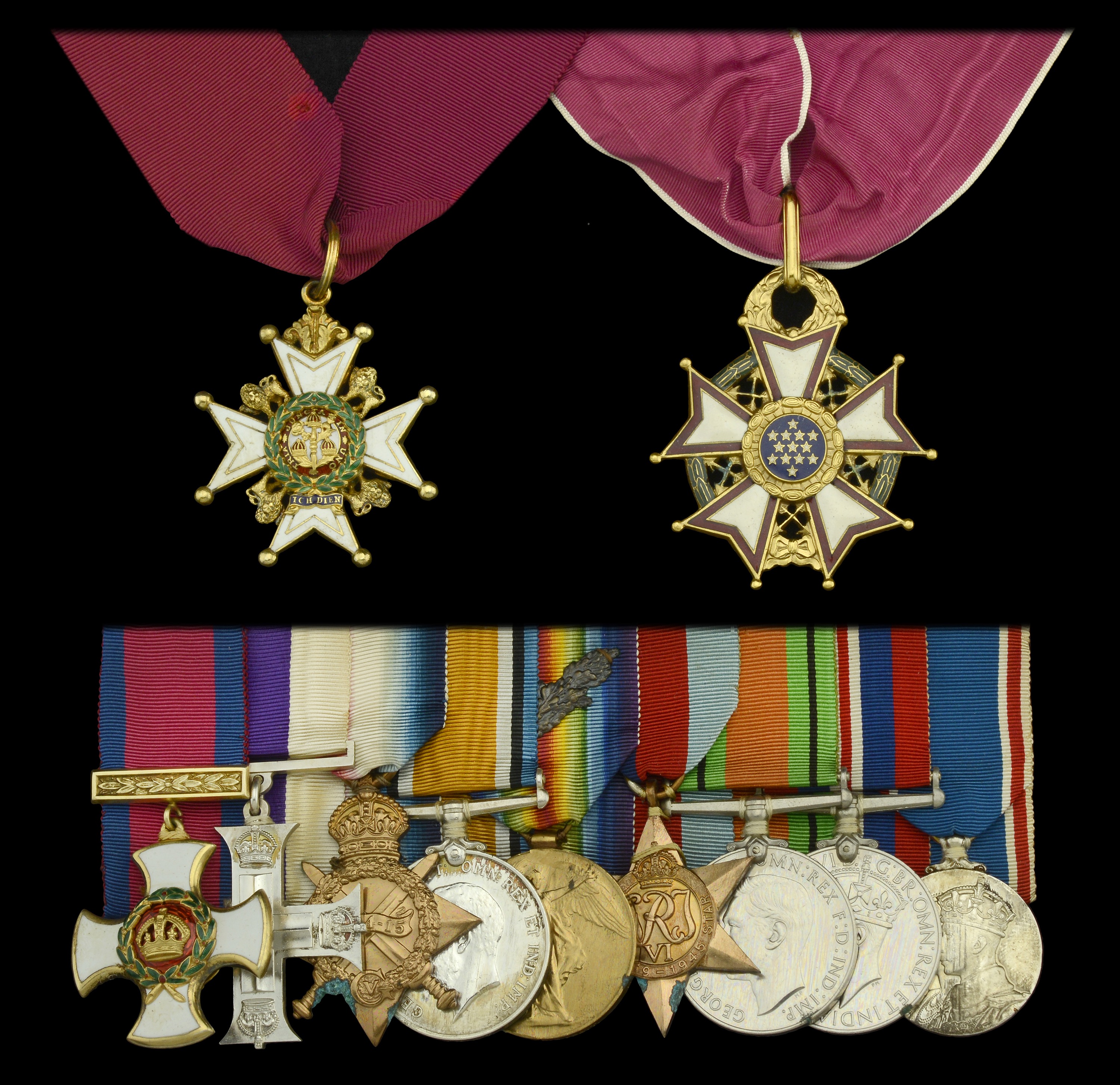A Second War C.B., Great War D.S.O., M.C. group of eleven awarded to Major-General D. H. Pratt, Royal Irish Regiment, later Royal Tank Regiment, who was twice Mentioned in Despatches The Most Honourable Order of the Bath, C.B. (Military) Companion’s neck badge, silver-gilt, with full neck riband; Distinguished Service Order, G.V.R., silver-gilt and enamel, with integral top riband bar; Military Cross, G.V.R., the reverse contemporarily engraved ‘D. H. Pratt 1st. Battn. Royal Irish Regt.’; 1914-15 Star (Lieut. D. H. Pratt. R. Ir. Regt.); British War and Victory Medals, with M.I.D. oak leaves (Lt. Col. D. H. Pratt.); 1939-45 Star; Defence and War Medals 1939-45; Coronation 1937, unnamed as issued; United States of America, Legion of Merit, Commander’s neck badge, gilt and enamel, with neck riband, the breast awards mounted court-style for wear; together with the related miniature awards, these mounted ordinary-style for wear, cleaned and lacquered, the medals having at some point been mounted in a glazed display frame, with traces of verdigris where the steel mounting pins have been in contact with the medals, especially on the 1914-15 Star and 1939-45 Star, otherwise generally good very fine (11) £3,000-£4,000 --- C.B. London Gazette 1 January 1944. D.S.O. London Gazette 18 July 1918: ‘For conspicuous gallantry and devotion to duty in an attack. It was largely owing to his careful preparations and excellent leadership that his tanks were successful in reaching all their objectives. He directed the operations on foot, going forward in front of the infantry and in the face of strong opposition. He never spared himself, and showed the greatest courage and contempt for danger.’ M.C. London Gazette 23 June 1915. United States Legion of Merit, Commander London Gazette 15 August 1946. The original citation states: ‘Major General D. H. Pratt, British Army Staff, rendered exceptionally meritorious service from July 1940 to July 1943 as military advisor to the British Tank Mission in the United States and later as Chief of the Armored Fighting Branch. Through him, experience gained in British Development and Battle use of tanks was made available for application to the design and improvement of American Combat Vehicles.’ Douglas Henry Pratt was born in India on 7 October 1892 and was educated at Dover College and the Royal Military College, Sandhurst. He was commissioned Second Lieutenant in the Royal Irish Regiment on 20 September 1911, and was promoted Lieutenant on 15 April 1914. He served with them during the Great War on the Western Front from 19 December 1914, and was awarded the Military Cross the following June. Transferring to the Tank Corps, he commanded the 8th Battalion from 26 March 1918, and for his conspicuous gallantry and devotion to duty was awarded the Distinguished Service Order; he was also twice Mentioned in Despatches (London Gazettes 22 June 1915 and 25 May 1918). Pratt continued to serve in the inter-War period, and having attended the Staff College from 1923-24, served as a Staff Officer with the 42nd (East Lancashire) Division from 1926, and then on exchange with the Australian Army. He later served on the Staff at the War Office, being being appointed to the Command of the 2nd Battalion, Royal Tank Corps, in 1935. He returned to the War Office as Assistant Director of Mechanisation in 1937. Following the outbreak of the Second World War he was appointed to the command of the 1st Army Tank Brigade, and served with them as part of the British Expeditionary Force in France in 1940, being present at the Battle of Arras and the retreat to Dunkirk. Promoted Major-General, he proceeded to Washing D.C. where, as Major General Armoured Fighting Vehicle, he was instrumental in ensuring that the Sherman tank, then under development, was upgraded and up-gunned. His final appointment, in 1943, was as Deputy Director of the British Supply Mission in Washington. For his services in Washington during the Second World War he was appointed a Companion of the Order of the Bath and was awarded to United States Legion of Merit. He retired in 1946, and died on 14 May 1958. Sold with copied research.





